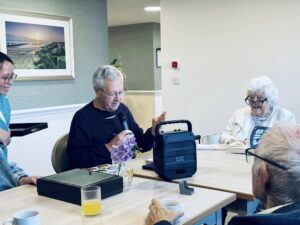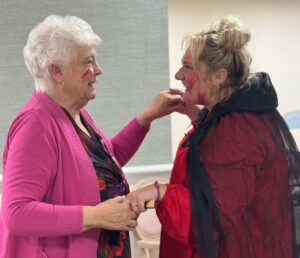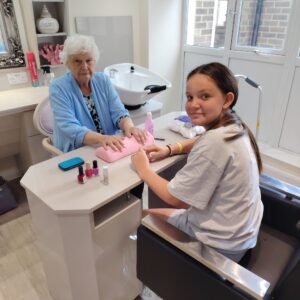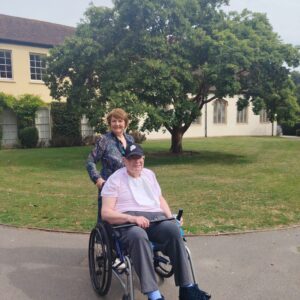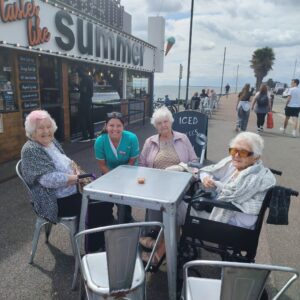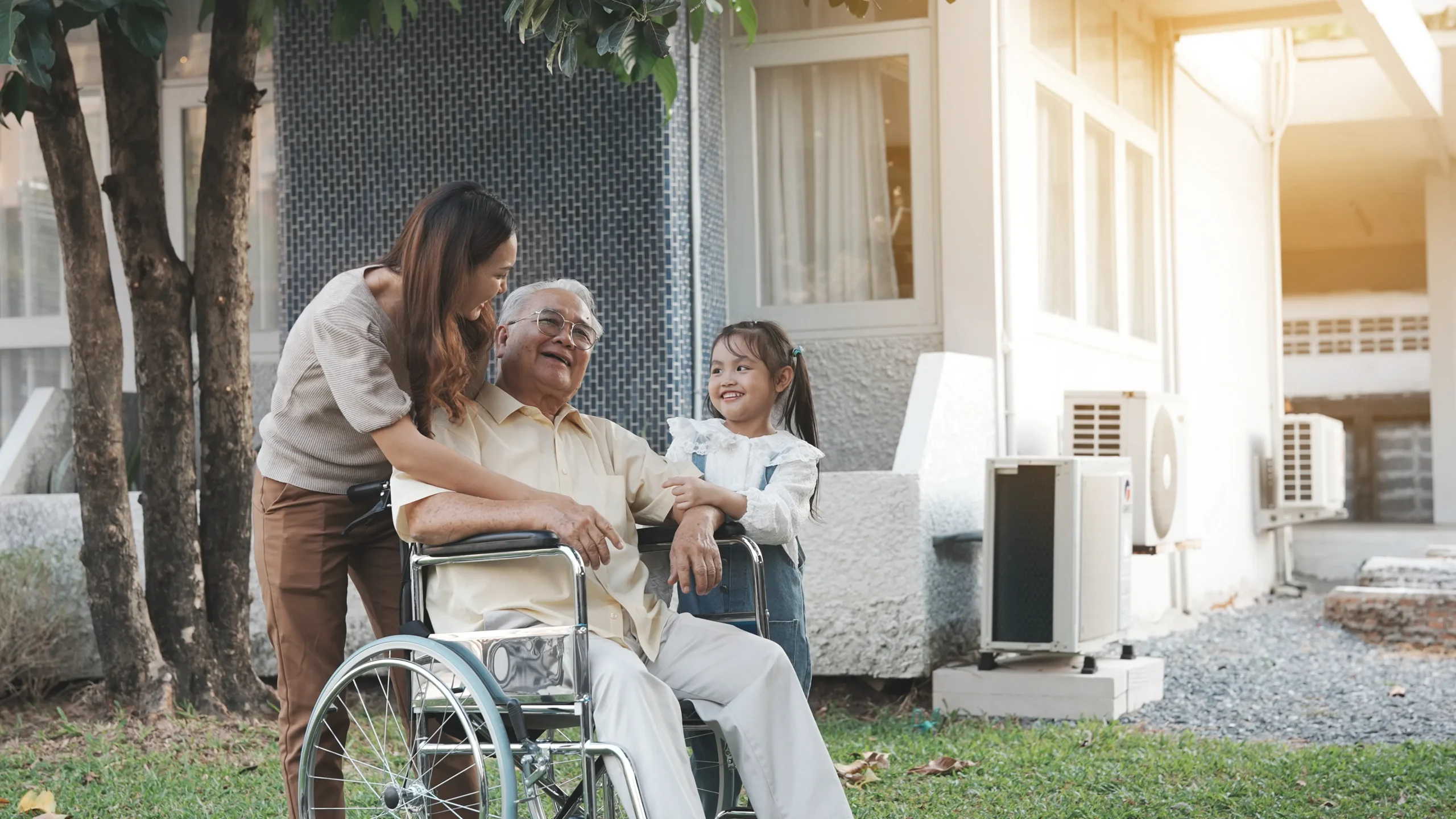
For many families, deciding when it’s time to consider residential care for an elderly parent is emotional. It’s not about recognising the practical challenges—like safety, health, or daily routines—but also maintaining their dignity, freedom, and emotional well-being.
For most families, it comes after months—sometimes years—of watching small changes build up: missed meals, restless nights, or the creeping worry that a fall could happen when no one’s around. Many adult children feel torn between wanting their parents to remain independent and realising that home support alone may no longer be enough.
Residential care isn’t about “giving up”—it’s about creating an environment where your parent can be safe, supported, and enjoy meaningful social connections. By recognising the early signs, you can make this decision easier and better for everyone involved. This guide cuts through the noise with ten practical signs, what they look like in real life, and how to move forward with confidence and compassion.
First, a quick view of residential care
“Residential care” covers a few settings:
- Care homes/assisted living (support with daily tasks, activities, meals).
- Nursing homes (clinical needs overseen by registered nurses).
- Specialist dementia care (secure environments, trained teams, calm routines).
Early Signs—you should watch for
1) Frequent falls or near-misses
Look for bruises in odd places, sliding to the floor, or “furniture walking.” If you’ve removed rugs, added grab rails, and arranged physio—yet falls keep happening—it may be time to consider residential care for an elderly parent where 24/7 supervision, call bells, and safer layouts reduce risk. Small detail, big difference: nighttime lighting and rapid response if they do slip.
2) Medication mix-ups
Missed doses, double-dosing, or confusion about what to take and when can quickly become dangerous—especially with heart meds, blood thinners, or insulin. Pill organisers, reminder apps, and pharmacy blister packs help, but if errors continue, a care home’s medication management can keep things steady and safe.
3) Weight loss, dehydration, or poor nutrition
Open the fridge. Is it full of out-of-date food or nothing at all? Are clothes looser, skin drier, or energy low? Malnutrition and dehydration often creep in when shopping, food prep, and appetite decline. Homes offer regular, balanced meals, snacks, and gentle encouragement at ealtimes—plus someone to spot swallowing problems or dental pain that’s putting them off food.
4) Worsening memory, wandering, or unsafe decisions
For families facing dementia, safety can turn on a dime. Signs include leaving the hob on, getting lost on familiar streets, letting strangers in, or going out at 2 a.m. In a specialist setting, doors are secured, gardens are safe to explore, and staff use calm routines and reassurance. That structure can be the difference between constant crisis and a life that feels settled again.
5) Isolation and loss of joy
Even with carers popping in, long days alone can feel endless. Watch for cancelled clubs, stopped hobbies, or statements like “It’s just me and the TV now.” Residential care isn’t only about risk; it’s also about connection—companionship at breakfast, activities that spark memories, music after lunch, and a knit-and-natter table. A fuller day can lift mood more than any gadget ever will.
6) Personal-care decline and home hygiene concerns
Unwashed hair, the same clothes three days running, unpleasant odours, or a bathroom that’s no longer clean—these aren’t about pride; they’re about safety and skin health. If gentle prompts, aids, and extra care visits no longer bridge the gap, a care home offers dignified support with washing, dressing, continence, and laundry—quietly, kindly, and at the right pace.
7) Nighttime risk and carer exhaustion
Wandering, sundowning, incontinence, or nighttime anxiety can mean nobody in the house is getting decent sleep. You’re not a robot; relentless broken nights fray tempers and judgment. Homes can provide around-the-clock supervision, meaning your parent sleeps more safely—and you can finally rest without waking at every floorboard.
8) More hospital visits—or slower recovery each time
Recurrent infections, chest issues, falls with head bumps, or confused/agitated episodes (delirium) after hospital stays are flags. If community teams have visited, equipment is in place. Crises still recur; that’s a strong signal it might be time to consider residential care for an elderly parent with onsite clinical oversight and swift escalation when things change.
9) Carer burnout (yes, this counts)
If you’re the main carer, you matter too. Burning the candle at both ends helps no one. Classic signs: resentment you hate admitting, constant worry, mounting admin, and a social life that’s vanished. Choosing residential care isn’t “giving up”; it’s changing the support model so you can be family again—spouse, son, daughter—rather than an exhausted case manager.
10) The home itself has become a hazard
Stairs are steep, bathrooms are narrow, or the layout can’t be adapted safely without major building work. When risks outweigh the benefits of staying put—even with gadgets and grab rails—it’s reasonable and loving to look at a safer environment designed for mobility aids, hoists, and continuous supervision.
A quick self-check (score to start a family conversation)
- Falls/near-misses in last 3 months → 1 point
- Medication errors (weekly) → 1 point
- Noticeable weight loss/dehydration → 1 point
- Wandering/unsafe decisions → 1 point
- Nighttime risks or sleep disruption → 1 point
- Carer exhaustion → 1 point
- Repeated hospital visits → 1 point
- Personal-care/home hygiene decline → 1 point
- Isolation/withdrawal → 1 point
- Unsafe home layout → 1 point
0–2: Keep optimising home support; review monthly.
3–5: Explore respite stays and shortlists; start tours.
6–10: It may be time to consider residential care for an elderly parent now; act promptly and kindly.
How to approach the conversation? (without starting a row)
- Lead with love, not logistics. “We want you to be safe and enjoy your day, not just get through it.”
- Offer choice. Bring two or three options—respite first, trial weekends, or a permanent move with a review.
- Visit together. Coffee in the lounge, peek at activities, and meet residents. Let the place “speak” for itself.
- Go slow where possible. A respite stay is an ideal bridge: less pressure, more insight.
- Get a health review. Ask the GP about memory assessment, medication checks, and reversible issues (UTIs, vitamin deficiencies, pain).
- Shortlist homes. Look for strong inspection histories, stable leadership, good staff ratios, and meaningful activities.
- Book tours at different times. Mornings vs afternoons feel different; watch staff interaction and mealtimes.
- Ask about dementia training, night cover, GP access, and falls prevention. Practical details signal culture.
- Plan the transition. Bring familiar bedding, photos, a favourite chair, and the radio they love. The little things matter.
Takeaway
Sometimes the bravest choice is also the kindest: recognising that love, safety, and a fuller day can live under one roof—just not the roof you’re used to. If several signs here ring true, it may be time to consider residential care for an elderly parent so they can be protected, stimulated, and cared for by a team, while you go back to being family first.
Making the decision to move a parent into a care home is one of the most challenging and emotional choices a child may face. Netto Care will help you navigate this emotional challenge, maintain their quality of life and dignity.
Call us today for more information on how we can improve your loved one’s life with our luxury residential care.

